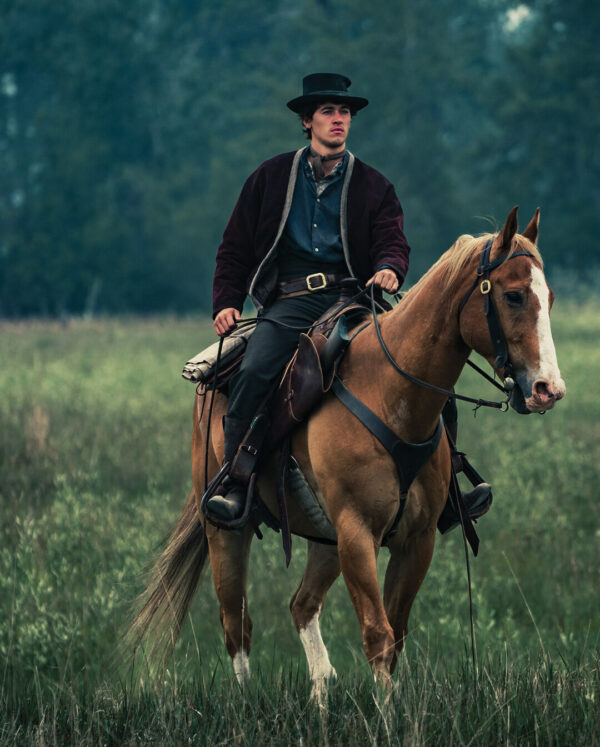BY TIM LASIUTA

“This isn’t a western,” said Billy the Kid director, Englands’ Otto Bathhurst of his current project “This is a character study of Billy the Kid set in the West.”
Bathhurst went on to explain that he wanted to tell the story of the relationship between Billy and his mother Kathleen, played by Eileen O’Higgins and how it impacts his future.
“We wanted to tell this story differently,” said Bathhurst. “Michael Hirst wrote a story of the west, before the ‘West’ and in this case, Billy the Kid a.k.a. Henry McCarty before and during his life of crime. What viewers will discover is that Henry is a lot more interesting than we could imagine.”
O’Higgins, Kathleen McCarty in the production, concurs.
“Billy, like Kathleen, are both strong characters. They come out of New York only to arrive in Kansas to realize that they have been sold a bill of goods that simply isn’t true, and they have a choice. To return home, or adapt,” said O’Higgins. “By staying they develop a strong sense of self and survival instinct.”
The first episode, “The Immigrants,” tells the story of the journey to Missouri and their struggles along the way. In a new place with nowhere to go, with no support and no prospects, their journey begins. O’Higgins can relate. “My father worked in Northern Alberta and the Yukon when he was young. He told me about his experiences and I was able to understand a little more of what he went through,” she said. “Everything was new to him and during production, Otto was able to give us one of those moments.”
“The interesting thing about that scene is that Otto was preparing us for ‘going into the unknown,’ and we did not get a look at the destination before we got there. So, as we rounded the corner, we really did see our new home for the first time! It was so real to us at that point.”
For both Bathhurst and O’Higgins, this was their first western project and project in Canada. O’Higgins was fascinated with gophers on John Scott’s Longview, Alberta movie ranch, while Bathhurst had a wideopen landscape canvas to work with.

“This was why we came to Alberta,” said the director. “Within a few hours’ drive, we could have open prairie, cattle herds or small settlements that looked like nothing we would expect. Our budget was not big, yet everything we needed was here from professional wranglers, horses and wagons at the Scott Ranch to a western town.”
“During one scene when one of the wagons was travelling along the trail, it was so amazing and authentic to be there,” remembered Bathhurst. “All you could hear was the sounds of the wagons; the rattle and creak of wood on wood, the wheels rolling over rough terrain and the animals breathing. It was amazing.”
Scott noted that during production on the wagon train scene that there were more than 100 horses and wagons.
“We wanted to make it authentic,” said Scott, “And it sure was. Otto came with a vision and even watching the dailies, I could tell. This is going to be a great show.
“We wanted to make it authentic,” said Scott, “And it sure was. Otto came with a vision and even watching the dailies, I could tell. This is going to be a great show.
He brought the best cameras and captured everything. This looks like a big production, yet it still is a TV show.”
An important element of the first four episodes is his contempt for corruption which starts in New York and is part of every community Henry/Billy encounters. From a crusading reporter who exposes a young Billy to his quest for truth to crooked bankers, publishers and business people, Billy struggles with his reactions to it.
“Billy was more sinned against, rather than a sinner,” said Bathhurst. “During his life, he was a victim and he fought back. Yet another strong theme Hirst incorporates is that of “Mecca points” and “lighthouses.” Billy always has a beacon to look to and important events and people and we want to tell those stories.”
Billy the Kid will run in Canada on the History Channel beginning May 20 on Paramount Plus.













